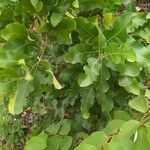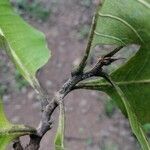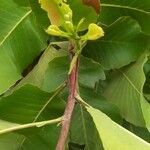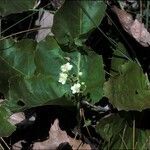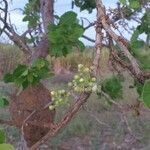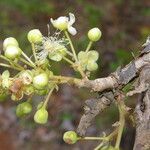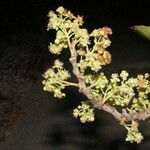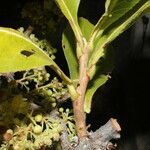Shrub or small tree. Leaves with the blade elliptic to ovate, the apex rounded to retuse, the base obtuse to truncate, the margins repand, 8-18 cm long, 5-9 cm wide, coriaceous, pustulate, scabrous, stellate-pubescent, the secondary veins 10-20; petioles 5-20 mm long, narrowly alate. Flowers 7-12 mm broad, pedicellate; sepals obovate, 5-7 mm long, 3-5 mm wide, pubescent within and without; petals white to greenish, obovate, 5-7 mm long, 3-5 mm wide; stamens 60-80, the filaments 6-8 mm long, the thecae 0.7 mm long, nearly parallel; carpels 2, globose, pubescent with simple hairs, the styles filiform, 3 mm long, the stigmas peltate. Fruit pubescent with simple hairs.
More
A small tree. It grows 3-7 m high. The trunk is twisted. The bark is cracked and scaly. It is grey-brown. The leaves are simple and alternate. They are 10-20 cm long. They have a sandpapery texture. The leaves have a wavy edge and can have rounded teeth. The flowers are white or pink. They occur in clusters. They have an unpleasant scent. The fruit occur in clusters and are 1-1.5 cm across. The fruit are hairy and contain two black seeds.
Chiefly on dry open or brushy hillsides, often on pine-clad slopes, at elevations below 1,200 metres in Guatemala. Savannahs and savannah forests.
More
A tropical plant. It grows in subarid regions. It is in the savannas.
